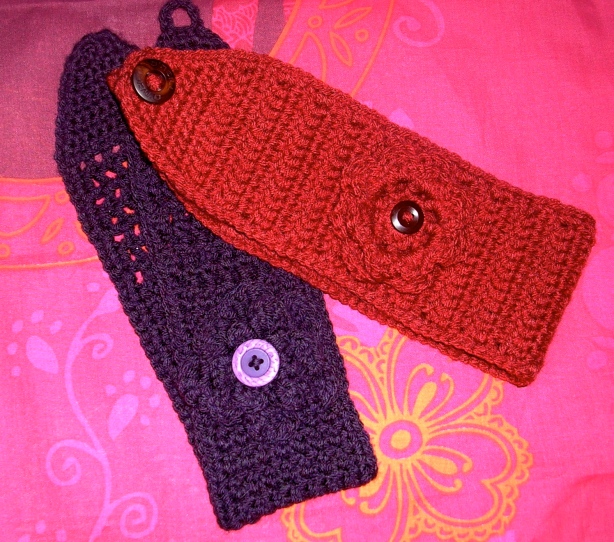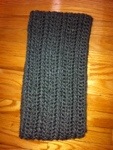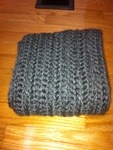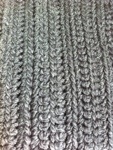So I’ve become a little bit obsessive compulsive about my latest creations. Headbands. Ear warmers. Fashionable head gear. OMG! The possibilities!
It started with this pin which links to Repeat Crafter Me. (http://www.repeatcrafterme.com/2011/12/crochet-winter-headband-with-flower.html) On her site, she shows the link to the pattern for the head band and the flower including her own variation on what she’s done with it.

I have taken my own twist on this and have created many of these cute things by starting and ending the same way, but allowing for variations on a pattern stitch to make up the headband. Then I’ve changed up the buttons, embellishments and flower accessories. I’ve even made up my own pattern for an amazing granny square winter headband that I’m completely in love with. Below details my take on the crocheted winter headband including a few of my versions of different pattern stitches. I’ll save the granny square headband for another post because I want to make more and perfect the pattern before posting it for FREE. Yeah, that’s how we roll!! Free patterns!
Here is the link to the original pattern for the headband. I’ve made a few from this pattern, but below I’ve included variations on the pattern stitch so that you can see that the options are endless and beautiful. There are some patterns that are thick and tight and some that have a lot of give and make the headband really stretchy and adaptable to all head sizes. Check out http://www.crochetme.com… it’s an amazing site with lots of patterns and info!
http://www.crochetme.com/media/p/90100.aspx
Crocheted Winter Headband
Using 4.0mm crochet hook
#4 worsted weight 100% acrylic yarn
Time: Takes me about 1.5 hours to complete a head band without an added embellishment.
No need to work on gauge because you are going to be able to adjust the size based on your head, but the patterns will all have different stretch to them depending on how tight or flexible you want your headband to be.
Beginning of head band:
Chain 4 sts
Row 1: sc in 2nd ch and across, ch 1, turn
Row 2: (2 sc) in 1st st, sc 1, (2 sc) in last ch, ch 1, turn
Row 3: sc across, ch 1, turn
Row 4: (2 sc) in 1st st, sc to next to last st, (2 sc) in last st, ch 1, turn
Repeat Rows 3 and 4 until you have 13 stitches then complete one row of sc across your 13 stitches, ch 1, turn. That completes the beginning piece of the headhand.
Next you can work on any pattern stitch that you like. You will want to work your pattern stitch until your headband reaches approximately 12 inches. It will feel really short when you measure it to your head, but when you do the finishing part it adds a few inches. Here are a few variations of pattern stitches to use.
This one here is the one from http://www.crochetme.com and seen in the example photo above from http://www.repeatcrafterme.com
Pattern Row: dc in first stitch, *skip 1 stitch, work (sc, dc) in next stitch; repeat from * until there are two stitches remaining. skip 1 stitch, sc in the turning chain of the previous row, ch 1, turn
Here are a few of my own creations.
Pattern Row Option 2: (*dc, ch 1, skip a st) repeat until last st and end the row with a dc in the last st, ch 1, turn. Repeat until you reach desired length.
Pattern Row Option 3: (*tc, dc) repeat across entire row, ch 1, turn. Repeat until you reach desired length.
Pattern Row Option 4: Row 1 – sc across, ch 2, turn. Row 2 – dc across, ch 1, turn. Repeat rows 1 and 2 until you reach desired length.
When you finish your pattern stitches, continue:
Row 1: sc across, ch 1, turn
Row 2: (begin decreases): Sc dec 2 st, sc to last 2 st, sc dec, ch 1, turn
Row 3: sc across, ch 1, turn
Repeat these Rows 2 and 3 until you have 3 stitches remaining. Now you are ready to do the sc border and ties.
Ch 1, sc around the headband. When you reach the 3 sc at each end, sc in 1st 2 stitches, then ch 7 – 9 and sl st to the final row of three sts at the base. Add another sl st for good measure, tie off and fasten loose ends.
Take a button or accessory of your choice and attach it to the opposite side of the head band. What you will have is a looped chain on one side and a button on the other. When the two sides come together the chain loops around your attached button securing your headband.
In some of my versions, I have created my own flowers or other embellishments to jazz up the design (oh geez… I said “jazz it up”. Am I 80 years old??? Well, I do like crocheting, tea and the Young & the Restless, so I’m sure my grandmother would be proud!)
Have fun with the pattern and check out the links to other sites on here. Leave your comments or send us pics of your versions of this quick project and we’ll post them!
Made beautifully by Leanne… 🙂














